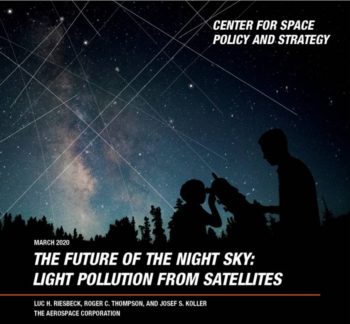The increase in proliferated low Earth orbit constellations has fueled concern over light pollution.
How might such interference affect astronomy and the astronomical infrastructure?
A new report from The Aerospace Corporation’s Center for Space Policy and Strategy takes a look at the proliferated low Earth orbit (pLEO) constellations set to launch over the next decade.
This development has fueled concern from the astronomy community, academia, and the general public over the light pollution visible in the night sky created by sunlight reflecting off these satellites.
Largely under-studied
“Like many aspects of large pLEO constellations, such as their effect on space traffic management efforts and potential increase in space debris, the overall impact of pLEO light pollution on astronomical observational equipment and research is still largely under-studied and merits objective analysis,” the report notes.
The report written by Luc Riesbeck, Roger Thompson, and Josef Koller of The Aerospace Corporation explains that operators of such constellations “face an opportunity” to get ahead of the issue by working with stakeholders to consider strategies for mitigation of optical reflectivity and albedo reduction.

Starlink satellites visible in a mosaic of an astronomical image.
Courtesy of NSF’s
National Optical-Infrared Astronomy Research Laboratory/NSF/AURA/CTIO/DELVE)
“Regulators, astronomers, and industry should be in communication about their respective operational needs to explore options for building optical interference mitigation into existing constellation licensing application processes,” the report explains.
To read the full report — The Future of the Night Sky: Light Pollution from Satellites – go to:
https://aerospace.org/sites/default/files/2020-03/Riesbeck_SatLightPollution_03102020.pdf



